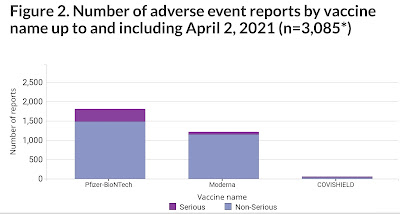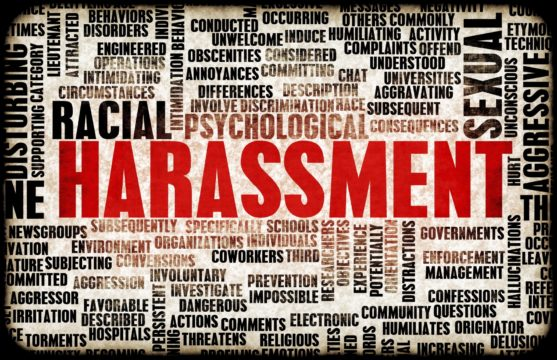Author: Tracey Young. (April 28,
2020). Canadian National Charter Class Action Legal Case Being Filed Against Workers Compensation Boards in Canada by Injured Workers Denied Claims. Canadian Advocacy Centre for Health, Safety and Justice. Retrieved from: https://canadianadvocacycentre.blogspot.com/2021/04/canadian-national-charter-class-action.html.
Introduction
April 28th has become known as the Day of Mourning for workers who have died, or been injured on the job in Canada.
Nobody goes to work thinking they might become injured, or disabled from their occupation, or job, or that they may never make it home. Families never expect to lose a loved one due to a work-related death, or the impacts of occupational injuries. Yet, every year, thousands of workers in Canada get injured at work. Hundreds of workers also lose their lives on the job every year. Many of these injuries and fatalities are preventable and occur as a result of failures of due diligence for workplace safety on the part of employers and their employees, and Workers Compensation Boards.
Most provinces in Canada are failing workers by ensuring that employers conduct their business operations in full compliance with workers compensation legislation, occupational health and safety regulations, and with their duty of care related to preventing unsafe workplace conditions that workers might face on the job.
In this article, I will provide an overview of the factors involved in how Workers Compensation Boards in Canada are failing in their legal Duty of Care, administrative and procedural fairness, due process, and natural and fundamental justice in how injured workers claims are handled.
I will identify common fact patterns that can be demonstrated by decision-makers who deny and limit injured and disabled workers injury claims for wage loss and health care benefits across the country. I will also link these fact patterns to the Canadian National Charter Class Legal Case that is being filed against Workers Compensation Boards in Canada by injured workers in most provinces and territories in April 2021.
Source: Association of Workers’ Compensation Boards of Canada. (2019). Key Statistical Measures: Claim Measures.
Canadian Statistics for Injured Workers
According to the Canadian Centre for Occupational Health and Safety (CCOHS), the following statistics about injured workers were reported in 2019:
➤ In 2019, 925 workplace fatalities were recorded in Canada.
➤ 882 were male workers, and 43 were female workers.
➤ Among these deaths were 29 young workers aged 15-24.
➤ Add to these fatalities the 271,806 accepted claims (an increase from 264,438 the previous year) for lost time due to a work-related injury or disease
➤ 33,615 from workers aged 15-24 had claims accepted
➤ These statistics only include what is reported and accepted by the compensation boards, there is no doubt that the total number of workers impacted is even greater.
Source: Association of Workers' Compensation Boards of Canada (AWCBC). Retrieved from: https://awcbc.org/en/statistics/canadian-workers-compensation-system-year-at-a-glance/.
Injured Workers: Subjected to Discrimination, Erasure of Disability, and Delays in Wage Loss and Health Care Benefits
Thousands of workers across Canada have experienced extreme conditions related to structural and institutional biases, discrimination, and the erasure of their disabilities and workplace injuries from Workers Compensation Boards in Canada.
As a result of the many injustices that have occurred for injured workers individuals and provincial groups have formed to create solidarity, and analyze and identify common fact patterns related to injured workers' mistreatment. These workers also identified systemic conditions that many injured and disabled workers experience when dealing with workplace injuries and disabilities and their involved with WCB's.
The primary goals and objectives of these systemic barriers has been identified as creating circumstances to delay, deny, or restrict injured and disabled workers from:
- Accessing wage loss benefits in a timely manner so they can focus on dealing with their injuries and disabilities, whether these are temporary or permanent.
- Restricting and limiting reasonably necessary and timely health care benefits that can support injured workers in recovering and engaging in rehabilitation and return-to-work plans that are worker-centred and individualized to fit the specific injuries and needs of workers.
- Denying that work-related injuries and disabilities are "compensable conditions" within the established provincial laws and policies that all employees who are decision-makers in WCB's are required to follow.
- Forcing injured workers to focus on learning about WCB provincial laws and policies related to denial of benefits and the filing of reviews on decisions to deny their claims, rather than focusing on healing from their injuries through recovery and rehabilitation planning.
Common Fact Patterns to Deny and Limit Injured Workers Claims ➤ Abuse of Administrative and Procedural Fairness in Assessing Injuries and Disabilities and Case Management and Rehabilitation: Many WCB's subject injured workers to an unfair, unjust, and biased process when their occupational injuries and their disabilities are being assessed. This is done in a variety of ways, which are outlined below.
➤ Violations and Deprivation of Constitutional Rights: This is connected the various ways employees of WCB's engage in unfair and unjust administrative and procedural decisions regarding denial of compensable conditions, wage loss and access to health care benefits.
➤ Ableism: WCB employees who make decisions on injured workers files often engage in ableism, a form of discrimination. This includes attitudes of bias, denial and erasure of work-related injuries and disabilities, and the impacts these have on injured workers, and their families.
"An “ableist” belief system often underlies negative attitudes, stereotypes and stigma toward people with psychosocial disabilities. “Ableism” refers to attitudes in society that devalue and limit the potential of persons with disabilities. Ableism is
…analogous to racism, sexism or ageism, [and] sees persons with disabilities as being less worthy of respect and consideration, less able to contribute and participate, or of less inherent value than others. Ableism may be conscious or unconscious, and may be embedded in institutions, systems or the broader culture of a society. It can limit the opportunities of persons with disabilities and reduce their inclusion in the life of their communities.[46] (Ontario Human Rights Commission).
➤ "Frustrating" workers' claims: Intentional time delays in decision-making on workers' claims, including "compensability" of claims, wage loss, and the ability of workers to access "reasonably necessary health care benefits", such as specialist assessments, medications, and equipment they require to support their injuries.
➤ "Starving" injured and disabled workers: Denying wage loss as a way to "starve", plunging them into "survival mode", and forcing workers to return to work while still disabled, injured, and suffering. Workers who are unable to support themselves, their families and face losing everything while trying to wait for initial wage loss decisions to be made, or after their wage loss has been denied by the WCB will often decide to return to work. Some injured workers are forced to file review after review, and go through various levels of appeal for years without receiving any wage loss benefits, or support.
➤ Arbitrary and unreasonable delayes and denial of wage loss claims: When injured and disabled workers are denied wage loss, they are often forced into self-representing in filing reviews of lower-level decisions. They often discover WCB decision-makers did not follow their own provincial laws and policies while denying claims coverage.
➤ The use of "Hired Guns": This involves the use of WCB-contracted service providers such as physicians, psychologists, psychiatrists, and other specialists who will provide professional opinions and clinical assessments that support the denial of injured workers claims, limitations and restrictions of benefits, and reduced permanent disability awards. These non-independent professionals may contradict and nullify treating physicians and specialists who work directly with the worker. They generally operate in a relationship of dependence, and a vacuum of professional ethics, because they are dependent upon the WCB's for their incomes.
Details of the National Charter Class Action Legal Case Against Canadian Workers Compensation Boards
A group of injured workers will bring a national class charter claim for damages, in the amount of $45 billion. The claim is against all of Canada’s Workers Compensation boards & tribunals.
The grounds of the class charter claim are based on the issue that the workers compensation boards and appeals tribunals have used many methods to deny legitimate claims for workers compensation benefits. Methods which are immoral, unethical, and most importantly an infringement of their Charter Rights!
Below I will provide the core aspects of the Charter Legal case that is being filed, and some of the most common fact patterns that injured workers have identified related to violations of their constitutional rights under the Canadian Charter of Rights and Freedoms when dealing with Workers Compensation Boards who make decisions about the "compensability" of their injuries and disabilities, and what benefits they are entitled to receive.
➤ Deeming, or Determining: "When the workers compensation board and/or appeals
tribunals across Canada, denies or reduces a legitimate claim for workers compensation
benefits based solely on an assumption an injured worker can perform a specific job or
work."
➤ Using Pre-existing Conditions to Deny Worker Injuries and Disabilities: Reducing or denying a
legitimate claim for workers compensation benefits based solely on an assumption or
allegation that an injured worker has/had a pre-existing condition, even if none exists.
➤ Use of "Paper Doctors" and "Paper Psychologists" to deny benefits, these are also referred to as "Independent Medical Examinations" (IME's): Many WCB's use "Medical Advisors" and/or "Psychology Advisors" who will never see the injured worker, but they will issue clinical opinions that often might ignore, over-rule, or undermine clinical assessments of functional capacity, diagnoses, and treatment recommendations from the treating physician and specialists who are working directly with the worker.
➤ Age discrimination toward workers: Workers compensation boards and
appeals tribunals will suspend a legitimate claim for workers compensation benefits
when an injured worker reaches the age of 65, whether they have pension earnings they can draw on, or not, or their ability to contribute to their pensions is dramatically reduced when they become injured, disable, and can no longer work, or have to take lower paying jobs.

Find Out More, or Join Your Provincial Charter Class Action Case
If you are an injured worker in Canada and want to find out more, or join the National Charter Class Action Case against your provincial government, visit:
Email: Fight@WCB@gmail.com
Visit: https://fightwcb.org/Classaction.html
Media Release: Injured Workers Will File 45 Billion Dollar Claim for Violation of Their Charter Rights! Retrieved from: https://fightwcb.org/files/Press%20Release.pdf
References and Resources
Association of Workers' Compensation Boards of Canada. Find Your Provincial Workers Compensation Board; Workplace Injury and Fatality and Claim-related Statistics. Retrieved from: https://awcbc.org/.
Canadian Centre for Occupational Health and Safety. Retrieved from: https://www.ccohs.ca/.
FightWCB website: Find out information about provincial and national injured workers groups; social media pages to follow; events and update. Retrieved from: https://fightwcb.org.
FightWCB. (April 28, 2021). Media Release: Injured Workers Will File 45 Billion Dollar Claim for Violation of Their Charter Rights! Retrieved from: https://fightwcb.org/files/Press%20Release.pdf.
Ontario Human Rights Commission. 5. Ableism, negative attitudes, stereotypes and stigma. Retrieved from: http://www.ohrc.on.ca/en/policy-preventing-discrimination-based-mental-health-disabilities-and-addictions/5-ableism-negative-attitudes-stereotypes-and-stigma.
Copyright © 2020-2021.Tracey Young/Canadian Advocacy Centre for
Health, Safety and Justice. All Rights Reserved.
_________________________________________________________
#workerrights #workplacesafety #Canada #occupationalhealthandsafety #OHS #DayofMourning



























